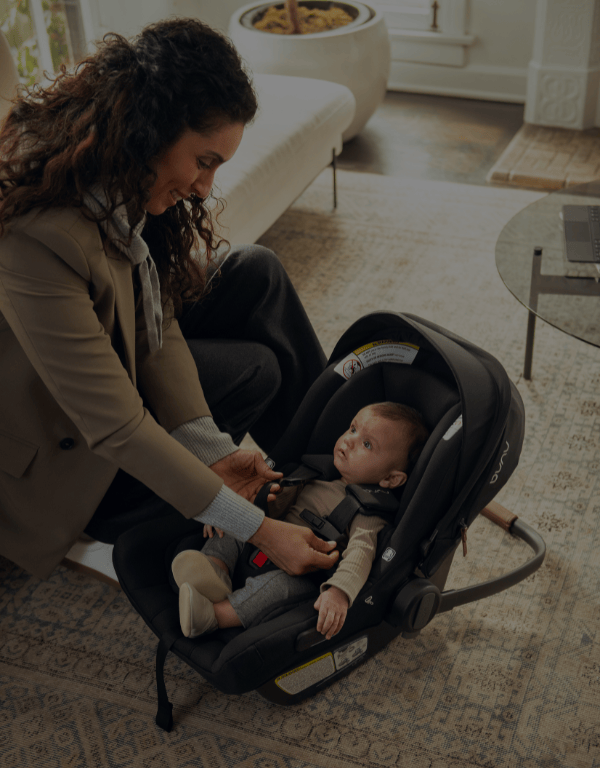Navigating daylight saving time with little ones can feel like you’re trying to solve a puzzle that keeps changing shapes. One minute, you think you’ve got your baby’s sleep schedule down to a science, and the next, you’re wondering why everything’s gone topsy-turvy. As parents, we’re all in this together, and with a few tried-and-true strategies up our sleeves, we can help our kids (and ourselves) make the transition a bit smoother. Probably.
How Will Daylight Saving Time Affect Your Baby or Toddler?
Adjusting to Daylight Saving Time (DST) can be challenging for parents and their little ones. As the clocks spring forward or fall back, your baby or toddler’s finely-tuned sleep schedule may experience some disruption. Here’s what you need to know about how DST might affect your child.
- Early Rising or Late Sleeping: Depending on whether you’re entering or exiting DST, your child might wake up earlier than usual or struggle to fall asleep at their typical bedtime. Their internal body clock, or circadian rhythm, is temporarily out of sync with the new time displayed on the clock.
- Mood Changes: With sleep schedules shifting, don’t be surprised if your child seems a bit more irritable, clingy, or prone to tantrums. Sleep affects mood, and even a one-hour change can have a noticeable impact on their temperament. Silver lining? You probably won’t notice a difference if you have a toddler.
- Appetite Adjustments: Meal times can also feel off for your little one, as hunger cues may not align with the new clock times. You might notice they’re less hungry at their usual mealtime or are hungrier at unexpected times.
How Long Will It Take Your Kids to Adjust to the Time Change?
Any time there’s a shift in your kiddo’s routine, anticipate an adjustment period. And while it may feel endless while you’re living through it, most kids (and adults) adjust to the time change in less than a week. Of course, every child is different, and some may take a few weeks to fully acclimate.
What If You Have an Early Riser?
Although it might sound unconventional, altering routines for certain sleep patterns may not always be the wisest course of action. Daylight Saving Time can actually be a blessing for kids who are natural early birds. For kiddos who were already bright-eyed at 5 a.m. and ready for bed by 7 p.m., the time change can actually make their schedules feel more manageable—for once.
How to Prep Your Kids for the Time Change
Preparing your kids for the time change doesn’t have to be a daunting task. With a few strategic steps, you can ease the transition and help ensure that everyone in the family adjusts smoothly.
Slow and Steady Wins the Race
The key to adjusting to the time change, whether “springing forward” or “falling back,” is to do it gradually. Start four or five days before the change by shifting your child’s bedtime and wake time by fifteen minutes each day. Yes, the idea of waking your snoozing baby is tough, but you’ve got this! To wake your little one gently, try opening the curtains and allow the sunlight to rouse them naturally.
This slow shift can help their internal clocks adjust without a shock—it’s like easing into a cold pool one step at a time rather than jumping in all at once. Remember, if you use wake windows to define nap times for your baby or toddler, you’ll need to shift them by fifteen minutes as well.
Set the Scene for Dreamland
Creating a cozy, sleep-friendly environment is essential, especially when the time change means it’s lighter or darker earlier than your kiddo is used to. An hour before bedtime, dim the lights in the house and keep your child away from screens. Phones, tablets, and televisions emit a lot of blue light, which can delay the production of the sleep hormone, melatonin.
Blackout curtains can be a game-changer, transforming a brightly lit room into dark space that won’t interrupt sleep. Even a little sliver of light from a window can impact your little one’s sleep. And if you don’t want to spring for curtains, aluminum foil or darkly colored construction paper will do the trick. Once everyone is tucked in, a white noise machine can help drown out the sounds of the evening that might keep kids alert when they should be winding down.
Embrace the Power of Routine
Kids thrive on routine because it gives them a sense of security and predictability. Establish a bedtime routine that’s calming and consistent: A bath, a story, some cuddles, and then lights out. This ritual signals their bodies and minds that it’s time to shift gears from play to rest (the bonus snuggles don’t hurt either).
And you may need to adjust your routine as your little one grows: Toddlers may find bath time more energizing than calming, and early readers may find an overlong story frustrating. Make sure to find activities that actually relax your child.
Light Exposure
In the mornings, expose your kids to natural light as soon as possible—it helps reset their internal clocks and lowers the production of melatonin. If the sun’s not up yet, bright indoor lights can serve as a good substitute.
Don’t Forget the Great Outdoors
Spending time outside during the day can also help adjust your child’s internal clock. Natural light, fresh air, and physical activity can do wonders for sleep quality and burn off energy. Plus, it’s a great excuse for some family fun time. Whether it’s a trip to the park, a backyard adventure, or just a stroll around the block, that outdoor time benefits the entire household.
What If You Have an Early Riser?
Although it might sound a bit unconventional, altering routines for certain sleep patterns may not always be the wisest course of action. Daylight Saving Time can actually be a blessing for kids who are natural early birds. For kiddos who were already bright-eyed at 5 a.m. and ready for bed by 7 p.m., the time change can actually make their schedules feel more manageable—for once.
Be Flexible and Sympathetic
While consistency is key, there’s also room for flexibility. If your child is particularly groggy one morning or too wired at night, it’s okay to adjust your approach slightly. Maybe they need an extra story one night or a little more playtime in the morning light. Watching and responding to their cues can make the transition smoother for everyone.
Adjusting to Daylight Saving Time with little ones in the house can be a bit of a juggling act, but with patience, consistency, and a few strategic moves, it’s entirely manageable. Remember, you’re not alone in this twice-yearly dance. So, here’s to longer days, shorter nights, and finding our way back to a peaceful night’s sleep, one bedtime routine at a time.
Finding What’s Right for You
Albee Baby is the oldest family-owned specialty baby shop in the US, and we pride ourselves on providing our customers with the best assortment of baby products anywhere, at fair prices, always. We’re committed to being an inclusive resource for parents and hope you feel empowered to find the right baby gear for your family. Still have questions? Feel free to contact our baby gear experts at 877.692.5233 or info@albeebaby.com
 Car Seats
Car Seats
 Strollers
Strollers
 Travel Cribs & Playards
Travel Cribs & Playards
 High Chairs
High Chairs
 Cribs & Nursery
Cribs & Nursery
 Health & Safety
Health & Safety
 Gift Shop
Gift Shop




























































